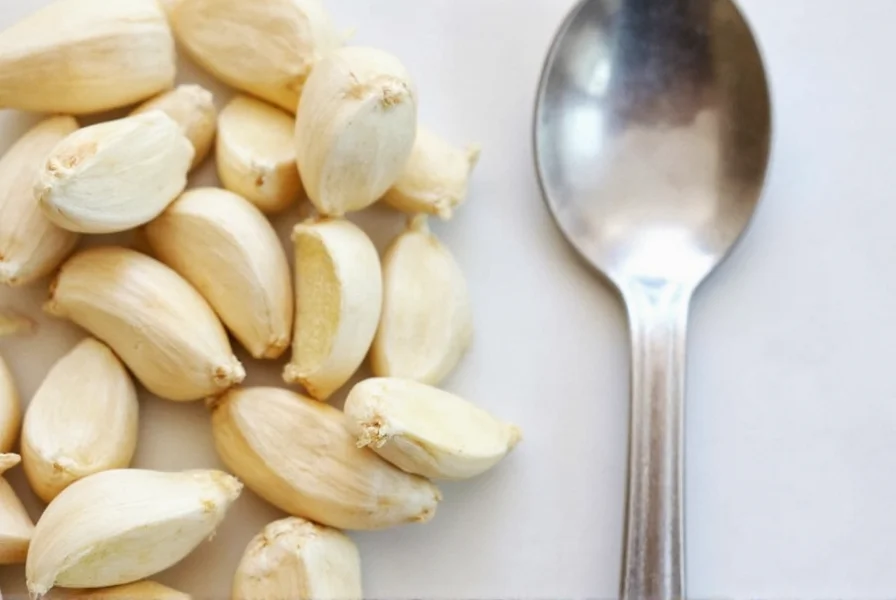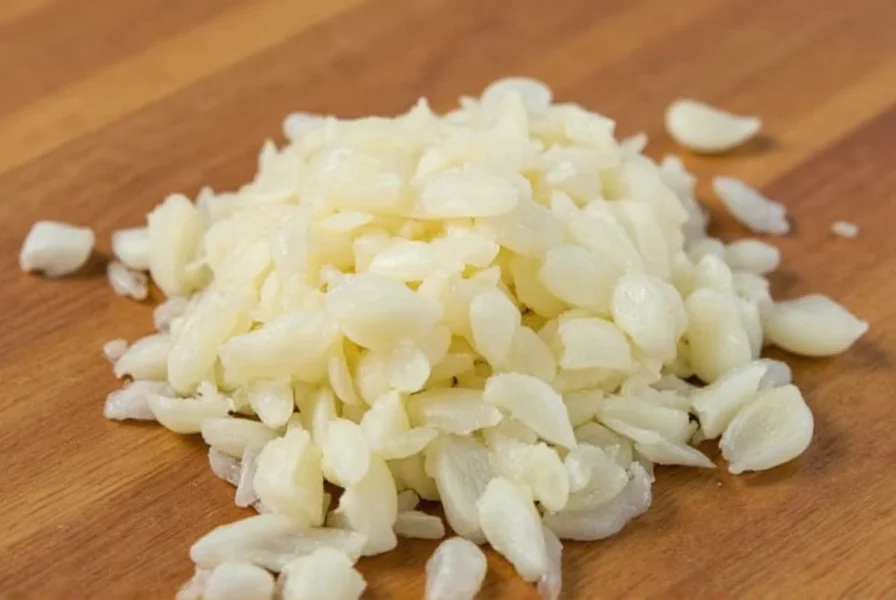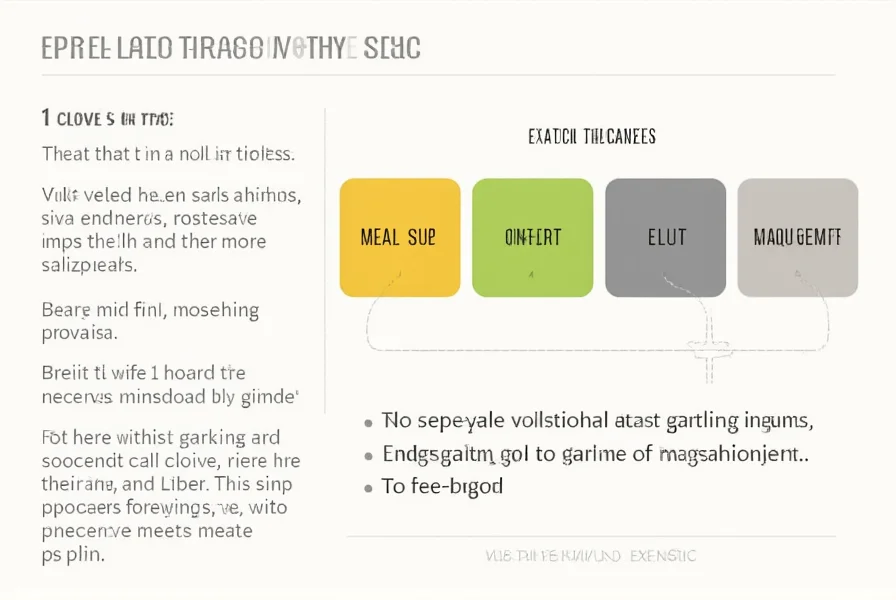Understanding garlic measurements is crucial for home cooks and professional chefs alike. When recipes specify garlic in cloves rather than teaspoons, knowing the exact conversion ensures your dishes achieve the perfect flavor balance without overpowering other ingredients. This guide provides accurate measurements, practical conversion tips, and helpful context for using garlic in your cooking.
Garlic Measurement Fundamentals
Garlic measurements aren't as straightforward as they might seem. Unlike standardized measuring tools, garlic cloves vary significantly in size depending on the variety, growing conditions, and bulb position. A single garlic bulb typically contains 10-12 cloves, with outer cloves being larger than inner ones.
When converting 1 clove garlic to tsp, the standard measurement assumes a medium-sized clove (about 1 inch long and 1/2 inch in diameter at its widest point). This average clove yields:
| Garlic Form | Equivalent to 1 Medium Clove |
|---|---|
| Minced garlic | 1/2 teaspoon |
| Chopped garlic | 5/8 teaspoon |
| Garlic paste (pressed) | 1/4 teaspoon |
| Garlic powder | 1/8 teaspoon |
| Dried garlic flakes | 1/4 teaspoon |
Accounting for Size Variations
Not all garlic cloves are created equal. Understanding size differences helps you adjust measurements for recipe accuracy. Here's how to handle different clove sizes when converting garlic clove to teaspoon:
- Small cloves (less than 3/4 inch long): Yield about 1/4 teaspoon minced garlic
- Medium cloves (standard size): Yield 1/2 teaspoon minced garlic
- Large cloves (over 1 1/4 inches long): Yield up to 3/4 teaspoon minced garlic
- Jumbo/Elephant garlic: One clove may equal 1-2 teaspoons minced
When precision matters—like in delicate sauces or dressings—consider weighing your garlic. One medium clove typically weighs 3-7 grams, with 5 grams being average. This weight-to-volume relationship provides the most accurate garlic measurement chart for cooking when exact flavor balance is critical.

Practical Recipe Applications
Knowing the how many teaspoons is a garlic clove conversion helps you adapt recipes confidently. Consider these real-world applications:
Pasta sauces: For a standard marinara serving four people, recipes typically call for 2-4 cloves. This translates to 1-2 teaspoons of minced garlic. Using too much can overwhelm the tomato flavor, while too little won't provide sufficient aromatic depth.
Garlic bread: The classic ratio is 1 clove per 2 slices of bread, or about 1/2 teaspoon minced garlic per slice. This ensures flavorful but not overpowering results.
Substitution guide: When fresh garlic isn't available, use these conversions:
- 1 clove fresh garlic = 1/8 teaspoon garlic powder
- 1 clove fresh garlic = 1/4 teaspoon garlic flakes
- 1 clove fresh garlic = 1/2 teaspoon jarred minced garlic (check for added preservatives)
Remember that dried garlic forms have more concentrated flavor than fresh, so start with less and adjust to taste. This substituting garlic in recipes knowledge prevents common seasoning mistakes.
Common Measurement Mistakes to Avoid
Cooks frequently encounter these garlic measurement challenges:
Overpacking measuring spoons: When measuring minced garlic, don't press it down. Lightly fill the spoon for accurate volume. Packed garlic can double the actual amount.
Ignoring garlic variety: Different garlic types have varying potency. Rocambole varieties tend to be stronger than Artichoke types, affecting how much you should use even when measurements are precise.
Seasoning too early: Garlic's flavor compounds change when cooked. Add minced garlic later in the cooking process for brighter flavor, or earlier for milder, sweeter notes. This affects how much you'll want to use in your garlic measurement equivalents.

When Precision Matters Most
Certain dishes require careful attention to how much minced garlic equals one clove:
- Vinaigrettes and emulsified sauces: Too much garlic can cause separation
- Delicate seafood dishes: Overpowering garlic masks subtle flavors
- Fermented foods: Garlic affects microbial activity in precise ways
- Garlic-infused oils: Proper ratios prevent potential food safety issues
For these applications, consider using a kitchen scale for the most reliable results. One medium clove weighs approximately 5 grams, providing a more consistent measurement than volume-based conversions.
FAQ: Garlic Measurement Questions
How much minced garlic equals one clove?
One medium-sized garlic clove yields approximately 1/2 teaspoon of minced garlic. Small cloves yield about 1/4 teaspoon, while large cloves can produce up to 3/4 teaspoon of minced garlic.
Can I substitute garlic powder for fresh garlic in recipes?
Yes, you can substitute garlic powder for fresh garlic using a 1:8 ratio. One medium garlic clove equals approximately 1/8 teaspoon of garlic powder. Remember that dried garlic has a more concentrated flavor, so start with less and adjust to taste.
Why does my garlic measurement seem different from recipe results?
Garlic measurements vary due to clove size differences, preparation method (minced vs chopped), and garlic variety. Additionally, recipe developers may use different size standards. For precision, weigh your garlic—one medium clove typically weighs 5 grams.
How do I measure garlic accurately without a scale?
Use a standard measuring spoon and lightly fill it with minced garlic without packing. For small amounts, remember that 1/4 teaspoon is about the size of a standard pencil eraser. When in doubt, start with less garlic—you can always add more during cooking.
Does roasting garlic change its measurement equivalent?
Roasting garlic reduces its volume slightly as moisture evaporates, but the standard conversion remains similar. One roasted medium clove still equals approximately 1/2 teaspoon when mashed. Roasted garlic has a milder flavor, so you might use slightly more than raw garlic for equivalent taste impact.











 浙公网安备
33010002000092号
浙公网安备
33010002000092号 浙B2-20120091-4
浙B2-20120091-4